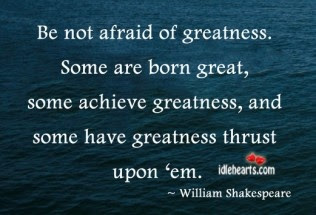We are one-third of the way through our year of Teaching and Learning together, which is really hard to believe. For me, time seems to move quicker the older I get. I must have blinked because, just yesterday, the days were long, and the calendar said August. In reality, December is next week, and we are only fifteen days of Teaching and Learning away from the Winter Holiday Recess...
I saw this graphic recently on Facebook, and it inspired me to be as articulate as I could be, across our district, about how thankful I am for education in East Greenwich Public Schools.
As we approach Thanksgiving this week, I am mindful of all the people involved in making East Greenwich Public Schools' education a reality for every student. It is a collective effort from all our employees and this community.
- It begins with our School Committee: Seven individuals, chaired by Alyson Powell, committed to ensuring that All Means All is not just the name of our Strategic Plan.
- The Town Council: President Mark Schwager leads a group of elected officials who support public education both in terms of its day-to-day operations and its commitment to our future.
- The School Construction Committee: With Andrew Nota as Co-Chair with me, and our construction partners, this group continues to shepherd the work of our Master Plan, which will breathe new life into our buildings.
- I'm proud of our Facilities Team: Under Bob Wilmarth's leadership, these individuals demonstrate stewardship in all six buildings.
- Our Technology Team: With Chris Scheib, this team ensures that both our infrastructure and hardware can support the needs of 21st-century education.
- The Office of Finance, Administration, and Operations: Maggie Baker leads a team that carefully manages our budget of almost $50 million. This office also works with our transportation partner, Ocean State, and is home to Human Resources.
- Student Services: Neil Marcaccio and our special educators serve students and families eligible for Individual Educational Programs (IEP) and 504s to meet their needs and make our curriculum fully accessible. Under this umbrella is Leigh Oliver, who is leading the effort to ensure best-first instruction as part of our Multi-Tiered System of Supports.
- Aramark Food Service: Monique Herard works with her team to offer healthy meals for our students and is partnering with us to continue to meet our students' needs.
- Our Building Principals: Eight educational professionals focused on instructional leadership along the continuum of our K-12 landscape. Our students' needs are as diverse as the student body itself, both academically and social-emotionally.
- Our Teachers: These professionals work tirelessly to engage our students and create spaces that are safe, welcoming, and inclusive, where mistakes are welcome, and all can grow to their potential.
- Our Paraeducators: The educational support personnel help ensure all students have fill access to the educational programs we offer.
- The Administrative Assistants: Otherwise known as our "Directors of First Impressions," these individuals are often the first faces and voices we see and hear throughout our district.
 |
| Photo courtesy of www.allaboutautismbni.com |




